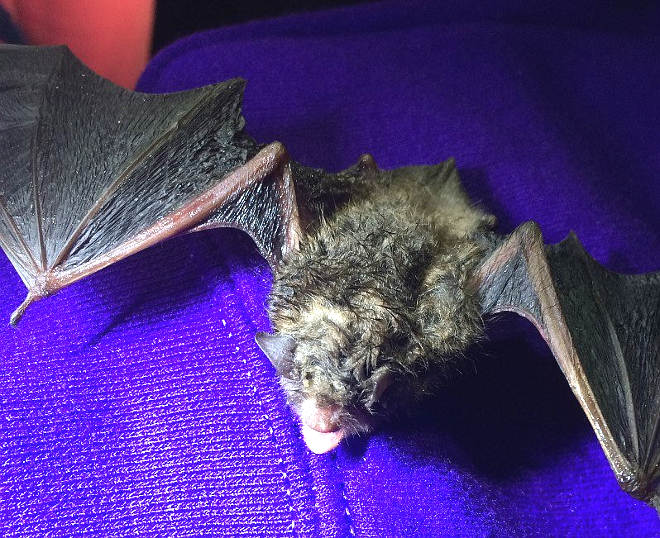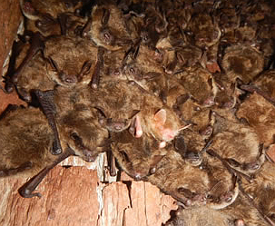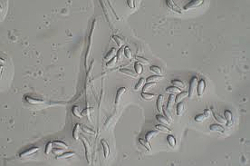|
Scientists find weakness in deadly fungus |
|
January 8, 2018 |
 |
| Photo by Daniel
Lindner, U.S. Forest Service |
| A little brown bat being checked
for deadly white-nose syndrome. |
|
A team of scientists studying a fungus called
Pseudogymnoascus destructans, or P.
destructans, noticed something interesting:
it lacks a key DNA repair enzyme.
P. destructans
is the fungus that causes
white-nose syndrome (WNS), a disease that has
killed millions of hibernating bats in North
America in the past decade, including North
Idaho, and for which, so far, there has not been
a successful treatment.
 |
| Photo by Brian
Heeringa, U.S. Forest Service |
| Little
brown bats hibernating. |
The discovery prompted Jon Palmer and Dan
Lindner of the U.S. Forest Service's Northern
Research Station and their partners, Kevin P.
Drees and Jeffrey T. Foster of the University of
New Hampshire, to begin exposing P.
destructans and six related fungi to DNA
damaging agents, and they discovered a possible
Achilles’ heel in P. destructans: a
brief exposure to UV-light is lethal to it.
The discovery could lead to treatments for what
is potentially the most catastrophic wildlife
disease of the century.
The fungal disease was first documented in 2006
in eastern North America, New York, and the
fungus has advanced west across the continent,
most recently being detected on the west coast.
Research has identified that there was a single
introduction of P. destructans into
North America in 2006, which has since spread to
31 states, including an apparent long-distance
jump to Washington state.
 |
|
P. destructans |
The fungus has a strict and cool temperature
growth range and therefore can only infect bats
during hibernation.
WNS can result in a 90-percent or greater
mortality in local hibernating bat populations.
Frequent arousal from hibernation, depletion of
fat reserves and dehydration appear to
contribute to mortality in infected bats.
P. destructans has been found
throughout Eurasia and it occasionally causes
mild WNS symptoms; however, no mass mortality
events have been observed in Eurasia. The fungus
has spread in a “bulls eye” pattern in North
America and has only been found in environments
where WNS-infected bats are found, strongly
suggesting that the fungus is not native to
North America.
The study, which was funded by the U.S. Fish and
Wildlife Service, was published in the journal
Nature Communications and is available by
clicking here. |
|
Questions or comments about this
letter?
Click here to e-mail! |
|
|
|
|

